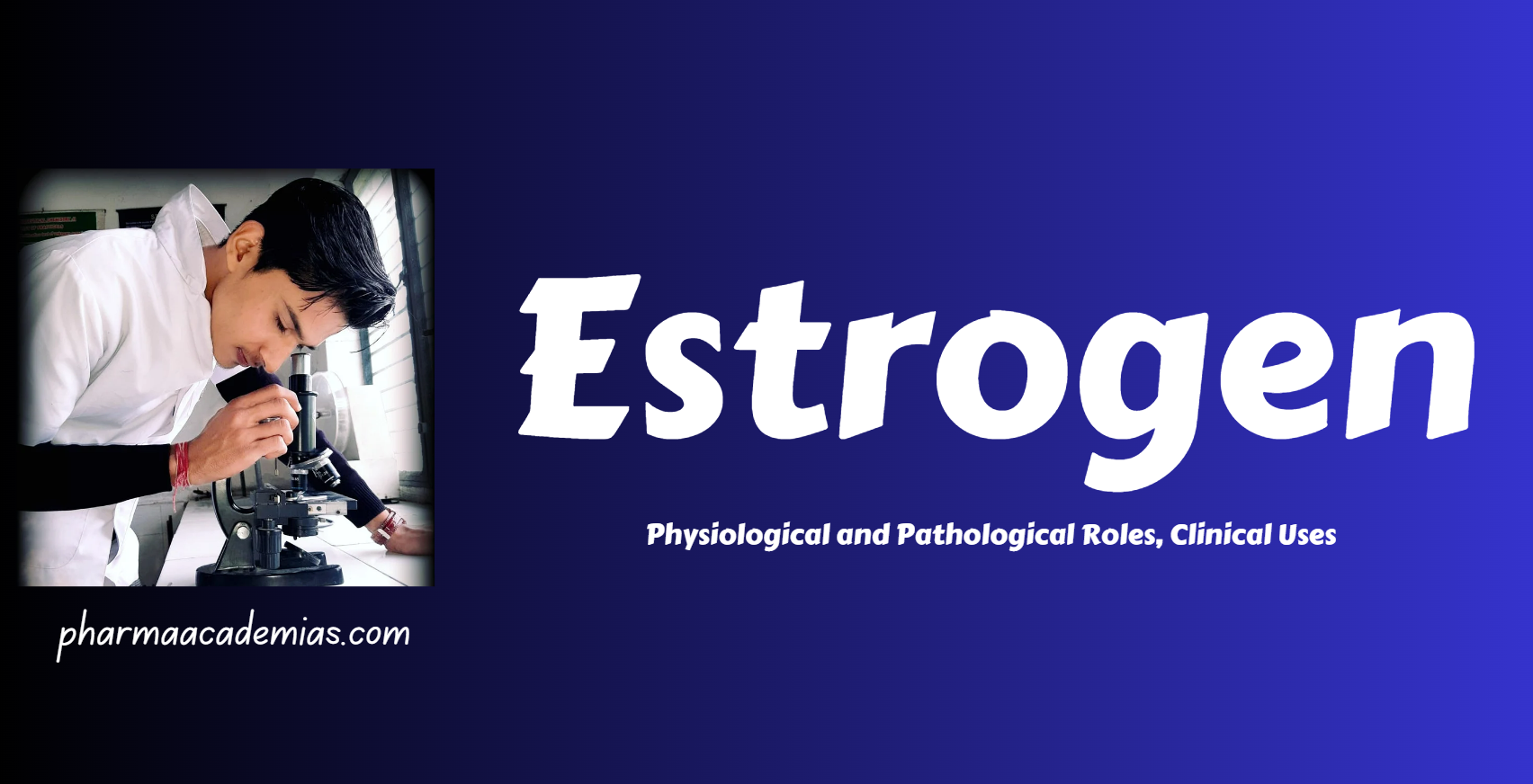Estrogen is a group of steroid hormones primarily produced by the ovaries in females. It plays a crucial role in the development and maintenance of the female reproductive system, influencing processes such as the menstrual cycle, secondary sexual characteristics, and pregnancy. The three main types of estrogen are estradiol, estriol, and estrone, with estradiol being the most potent. Beyond reproductive functions, estrogen has effects on bone density, cardiovascular health, and the central nervous system. Estrogen levels fluctuate during the menstrual cycle and decline during menopause. Hormone replacement therapy may be used to address symptoms of estrogen deficiency. In contrast, excess estrogen has been associated with certain health risks, such as an increased risk of hormone-dependent cancers.
1. Physiology of Estrogen
Source: Estrogen refers to a group of hormones primarily produced by the ovaries in females, although smaller amounts are synthesized in the adrenal glands and, during pregnancy, in the placenta.
Primary Types:
Estradiol: The most potent form, predominant during the reproductive years.
Estriol and Estrone: Other important forms with varying levels depending on life stage.
Functions:
Reproductive System: Estrogen plays a crucial role in the development and maintenance of the female reproductive system, including regulating the menstrual cycle.
Secondary Sexual Characteristics: It contributes to the development of secondary sexual characteristics such as breast development and widening of the hips.
Bone Health: Estrogen is essential for maintaining bone density and preventing osteoporosis.
Cardiovascular Health: It has cardiovascular protective effects, influencing lipid profiles and blood vessel function.
Central Nervous System: Estrogen also affects mood and cognitive function, and has neuroprotective properties.
Regulation:
Menstrual Cycle: Estrogen levels fluctuate during the menstrual cycle, with higher levels during the follicular phase.
2. Pathological Role of Estrogen
Estrogen Deficiency:
Menopause: A natural decline in estrogen levels during menopause can lead to symptoms like hot flashes, vaginal dryness, and mood changes.
Osteoporosis: Reduced estrogen levels contribute to bone loss and an increased risk of osteoporosis.
Estrogen Excess:
Menstrual Irregularities: Excessive estrogen or imbalances with other hormones can lead to menstrual irregularities.
Hormone-Dependent Cancers: Prolonged exposure to high estrogen levels may increase the risk of hormone-dependent cancers, such as breast cancer.
3. Clinical Uses of Estrogen
Hormone Replacement Therapy (HRT):
Menopausal Symptoms: Estrogen is used in hormone replacement therapy to alleviate menopausal symptoms like hot flashes and vaginal dryness.
Contraception:
Combined Oral Contraceptives: Estrogen, along with progestin, is a component of combined oral contraceptives.
Osteoporosis Prevention:
Postmenopausal Women: Estrogen may be prescribed to postmenopausal women to prevent osteoporosis.
Hormone-Sensitive Cancers:
Breast Cancer Treatment: Healthcare providers treat estrogen receptor-positive breast cancer with drugs that block estrogen’s effects in some cases.
Urogenital Health:
Vaginal Atrophy: Estrogen creams or rings may be used to alleviate symptoms of vaginal atrophy.
4. Considerations in Treatment
Individualized Approach:
Hormone Levels: Treatment often involves individualizing therapy based on hormone levels, medical history, and symptoms.
Risk-Benefit Assessment:
Cancer Risk: Healthcare providers should weigh the potential risks of estrogen therapy, such as an increased risk of certain cancers, against its benefits.
Estrogen plays a multifaceted role in various physiological processes, from reproductive health to bone and cardiovascular health. Understanding its physiological functions and the impact of deficiency or excess is crucial in managing conditions and making informed decisions about clinical interventions, including hormone replacement therapy and cancer treatment.

